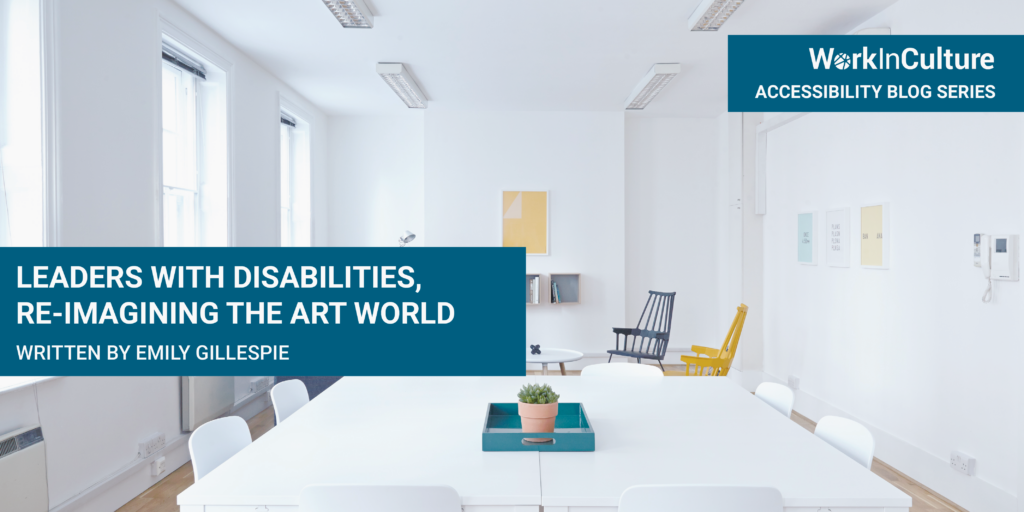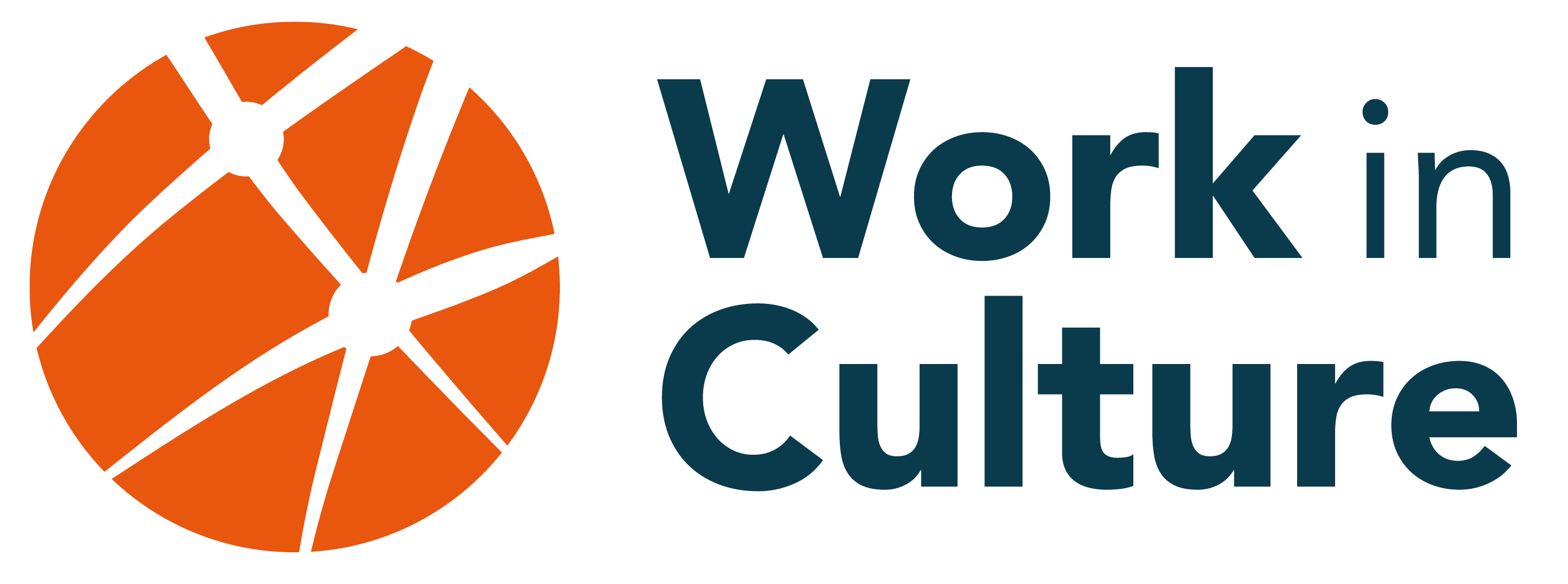
| Prioritizing Access (Volunteers) | Inclusive Workshops (Teaching Tips) | Support Providers | Leaders with Disabilities | Trauma-Informed Practices | Meaningful Outreach |
Witten by Emily Gillespie
Introduction
Disabled people are often viewed as challenging the normal order and speed of the world. In stemming from this individualization of disability and this discomfort with difference, disability history and culture is often excluded from public cultural spaces such as art galleries and museums. (Read more about this history in Untold Stories a Canadian Disability History Reader, “Uncovering Disability History”).
There is a slow cultural shift around the perception of disability and a reclaiming of disability culture and pride. Eliza Chandler, professor at Toronto Metropolitan University, explains that disability arts is part of a political movement for inclusion led by disabled people, that helps imagine and celebrate new understandings of disability. In disability art, disability is a “creative entry point” and a space to complicate and enhance Canadian culture. When thinking about disability art, we are invited to think about the cultural work being done as well as accessibility.
Questions about leadership should highlight the ideas and expressed needs of disabled people, rather than trying to fit disabled people into the existing art world.
For instance, due to my disabilities it takes me longer to do things. I have fewer hours in a day; therefore, I find traditional ways of accessing leadership roles, such as volunteering extensively, or continually producing new content inaccessible and exhausting. I often fear that if I cannot keep up like a person without disabilities, I will not have access to leadership opportunities. Since many of my disabilities are not visible, I fear that people assume I’m lazy or don’t care when I don’t attend events or contribute as much as others in the community or step aside in other ways. That said, explaining that I’m disabled, and cannot because of access needs can be vulnerable and exhausting. I fear that in certain spaces I am only welcome as an artist or as a leader if I can act and contribute as though I am not disabled. This feels like the invisible expectation.
As a low-income disabled person, I am often excluded because of finances from places where I could develop further skills and leadership opportunities as an artist. Since I am a low-income disabled person, I cannot pay someone to support certain elements of my art career, nor do I have the capacity to develop the skills myself. For instance, I struggle with technology, yet I do not have the means to pay for a nice website, yet this is the expectation, and would advance both my career and visibility as a disabled artist.
What You Can Do
- Be aware of the history of erasure and exclusion disabled creators have faced, the role of disability arts in advancing social movements and the terminology being used in the community, have a basic understanding of disability culture.
- If you are a gallery or museum curator, how are you including and engaging with disability art and history?
- Be open to disability art and disability aesthesis which challenges and disrupts how disability as well as art is considered, be inclusive of new cultural practices emerging from the disability arts movement.
- Consider disability and leadership from an “intersectional” framework which acknowledges that all experiences of disability and marginalization are not equivalent and all artists with disabilities do not have equal access to opportunities. How can you challenge who has access to leadership roles? For instance, who do you invite to speak at your events? Are folks with certain disabilities and privileges easier to include? Take disability arts seriously, apply the same level of art criticism when reviewing work by disabled creators.
- Focus on the work of disabled people and not service providers when discussing and critiquing art.
- Ensure professional development opportunities are truly accessible: for instance, is the cost for a conference prohibitive for a person living on a fixed income? Are conferences, educational spaces, networking events and openings accessible? Do people with disabilities have the same opportunities to develop their artistic career? How are you addressing this?
- How are the structures of art organizations creating accessibility barriers? For instance, do you treat all artists as the same through processes such as having rigid timelines for submissions?
- Are alternative types of participation available; for instance, is there a livestream of an event? If a speaker is ill can they do a keynote via Skype? How can technology be used to enhance leadership opportunities?
- How is your organization or business accessible to students, job candidates and employees with disabilities? Do they have the opportunity to access leadership roles in your organization?
- Consider how disability art organizations have centered the work and experiences of disabled people as well as the knowledge said organizations have created about disability arts and accessibility. What can you learn from them? How can you work together? From Toronto consider Tangled Art+ Disability and Workman Arts.
Conclusion
Understand that disabled people have unique skill sets that emerge from navigating their disability and the environment, and incorporate this specialized knowledge in leadership opportunities. Provide meaningful access to leadership opportunities and let disabled people do the rest, as the saying goes “pass the mic.”
Be open to new art practices that emerge from the inclusion of disability, that challenge and enhance how we think and interact with art. Many disabled artists may focus some of their work on disability related issues; it’s important to not expect all art and leadership to focus on being disabled. Lastly, this work is never complete, but rather part of an ongoing conversation; be open to feedback and doing better together.
References:
http://cjds.uwaterloo.ca/index.php/cjds/article/view/468/709
https://www.canadianscholars.ca/books/untold-stories
https://alllitup.ca/Blog/2018/When-Buildings-Do-the-Dirty-Work-CanLit-Hands-Aren-t-Clean
https://canadianart.ca/features/7-things-everyone-needs-to-know-about-art-disability/
https://www.youtube.com/live/xiwACbRjPw0?si=NQVhsNrjW5krfOq5
Further Reading:
https://www.arts.gov/NEARTS/2015v1-challenging-notions-accessibility-and-arts/imagining-what-disability-actually
http://www.lionorfox.com/blog/suggestions-for-working-with-vulnerable-artists
https://canadianart.ca/features/on-the-complexity-of-cripping-the-arts
https://www.cbc.ca/arts/what-does-it-mean-to-flourish-these-artists-with-disabilities-are-dismantling-assumptions-1.4817207
https://arsenalpulp.com/Books/C/Care-Work
###
More blogs from this series:
| Prioritizing Access (Volunteers) | Inclusive Workshops (Teaching Tips) | Support Providers | Leaders with Disabilities | Trauma-Informed Practices | Meaningful Outreach |
Emily Gillespie is a Toronto-based author and disability consultant, who enjoys using art to talk about disability. Emily recognizes that disabled people have different experiences and through her work focuses on people’s individual needs.
Follow Emily on Facebook and Twitter | Follow Accessibility Advocacy Art on Facebook
